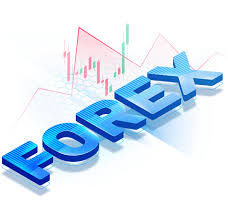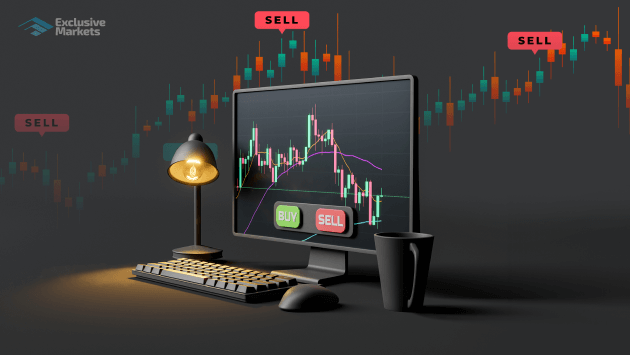
Automated Trading in Forex: A Comprehensive Guide
In the ever-evolving landscape of financial trading, automated trading forex Online Trading CM has emerged as a leader in providing resources for those interested in automated trading. This technique has transformed how traders engage with the forex market, making it more accessible and efficient. In this article, we will explore the key concepts of automated trading, its advantages, and the necessary steps to implement your own automated trading strategy in forex.
What is Automated Trading?
Automated trading, also known as algorithmic trading, refers to the use of computer algorithms to execute trading orders. It allows traders to set up specific criteria for buying and selling currencies and execute these trades automatically, without the need for human intervention. The primary benefit of this approach lies in its ability to operate 24/7, capturing trading opportunities at any time, regardless of the trader’s availability.
The Advantages of Automated Trading in Forex
There are several compelling reasons why traders opt for automated trading in forex:
- Emotional Detachment: One of the most significant advantages is the elimination of emotional trading. Human emotions can lead to poor decision-making, but automated trading strategies operate based on predefined rules.
- Backtesting Capability: Traders can test their strategies on historical data before applying them in real-time, allowing them to refine their methodologies and ensure viability.
- Speed and Efficiency: Automated trading systems can analyze market conditions and execute trades much faster than humans, increasing the potential for profit.
- Discipline: Automated systems maintain discipline by adhering strictly to established criteria, minimizing the likelihood of impulsive decisions.
How Automated Trading Works
Automated trading works through the development of trading algorithms, which are essentially a set of rules or guidelines that dictate when to enter or exit trades. Here’s a simplified overview of the process:
- Strategy Development: Traders must first devise a trading strategy. This involves determining the market conditions under which they wish to trade, such as price levels, news events, and technical indicators.
- Programming the Algorithm: Once a strategy is in place, it must be coded into a programming language that the trading platform can interpret. Many platforms support languages like MQL4, MQL5, or Python.
- Backtesting: The algorithm is then tested against historical market data to evaluate its performance. This helps traders assess whether the strategy is viable and profitable.
- Implementation: After successful backtesting, the algorithm can be deployed in the live market to execute trading orders according to the strategy.
Choosing the Right Automated Trading Software
Selecting the right software is crucial for successful automated trading. Here are key factors to consider:

- User-Friendly Interface: The platform should be intuitive and easy to navigate, especially for beginners.
- Supported Assets: Ensure the software supports forex trading specifically, as well as other assets you may be interested in.
- Backtesting Features: Look for platforms that offer robust backtesting capabilities to fine-tune your strategies.
- Customer Support: Reliable customer support is essential for troubleshooting issues that may arise during trading.
Strategies for Successful Automated Trading
To maximize success with automated trading in forex, traders should consider the following strategies:
- Trend Following: This strategy involves identifying the direction of the market trend and executing trades that align with that trend.
- Mean Reversion: This strategy attempts to capture profits through the assumption that prices will revert to their mean over time.
- Arbitrage: This approach exploits price differences between different markets or exchanges, allowing traders to profit from the discrepancies.
- News-Based Trading: Algorithms can be designed to react to news events that might influence currency values, making this a potentially lucrative strategy.
Risk Management in Automated Trading
While automated trading presents numerous opportunities, it also involves risks. Implementing sound risk management strategies is essential to protect trading capital:
- Stop-Loss Orders: Setting stop-loss orders ensures that trades are closed automatically when a certain loss threshold is reached.
- Position Sizing: Properly managing the size of each trade relative to the overall account balance helps mitigate risks.
- Diversification: Avoid putting all funds into one strategy or currency pair; diversify to spread risk across different trades.
Getting Started with Automated Trading in Forex
If you’re interested in starting automated trading in forex, follow these steps:
- Educate Yourself: Learn about forex trading and automated strategies through courses, books, and practice accounts.
- Choose a Broker: Select a reputable broker that supports automated trading and has a trading platform suited for your needs.
- Develop Your Strategy: Create a trading plan outlining your strategy, risk tolerance, and trading goals.
- Test Your Algorithm: Before trading with real money, always backtest your algorithm on historical data to assess its potential effectiveness.
- Start Trading: With a tested strategy and proper risk management in place, you can begin live trading and monitor your algorithm’s performance.
Conclusion
Automated trading in forex offers a powerful approach for traders seeking to optimize their trading strategies and capitalize on market opportunities. By leveraging the advantages of automation, traders can minimize emotional influences, enhance efficiency, and implement sophisticated strategies. However, success in automated trading requires careful consideration of strategy development, risk management, and the right tools. With diligence and continuous learning, traders can harness the potential of automated trading to achieve consistent success in the dynamic world of forex.